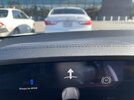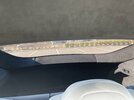The sentiments about how Tesla removing features before the replacement functionality is available is crappy customer service, questions about whether it's legal to do this to orders-in-progress and observations about how inconvenient the semi-dodgy wipers/lights etc are to an owner right now, today, are all valid (if MASSIVELY overblown on this whine-fest thread).
Stripping it back to the 'why don't Tesla care?' question, though, I'd say sit down and watch the FSD part of the AI day presentation (Starts
0:58:00. If you understand everything they're talking about you're doing far better than me, but there's a thread of layman-friendly discussion throughout.). Now, imagine you're speaking to that team working on solving the problems that they're working on and imagine telling them they have their priorities all wrong and you need your wipers sorted, ASAP.
Or imagine that you're in charge of Telsa's operations and you have the following options (assuming that the underlying problem is that USS are in short supply across the industry and can't be obtained):
1) Suspend delivery of all vehicles until you can deliver them as specc'd
2) Deliver cars without and prepare for an expensive retrofit program, using your very low capacity service network (vs ICE vehicles that all visit service centres routinely)
3) Recognise that you were dropping this hardware anyway, so drop it a bit early.
(Note that 2 and 3 are the same result to the customer. You can't have USS if they're physically not available, so you'd have had to have had a car without them in a retrofit scenario.)
You'd be insane not to take option 3, with the offer for anyone who doesn't like it to cancel or defer, which is exactly what they did.
PS. Based on what's in that presentation I'd say the TV based parking system does have every chance of being massively superior to USS. I look forward (with moderate confidence) to having a car that doesn't panic at the sight of light foliage and puddles. Whether I'll get it any time soon is another matter.





